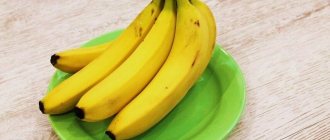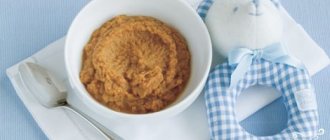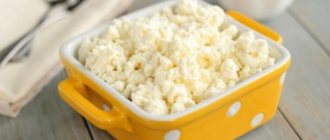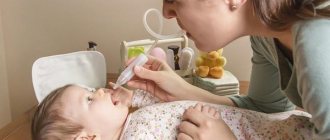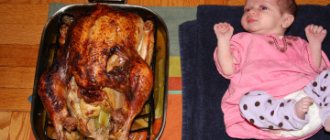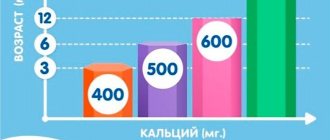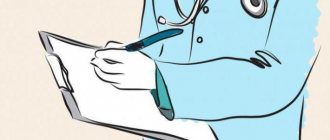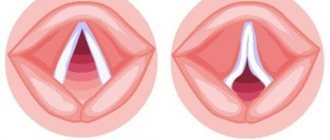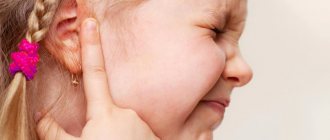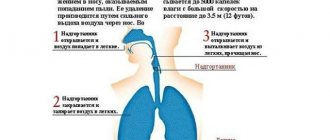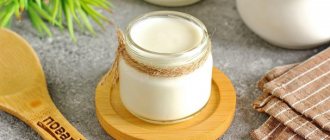Newborns are often bothered by a runny nose. Sometimes it is physiological in nature and does not require treatment. In some cases, medical supervision is required. To alleviate the baby’s condition and restore his breathing, you need to know how to remove snot from a baby. Following the recommendations will help your baby get rid of congestion quickly and painlessly.
Newborn
Causes of a runny nose in a newborn
A runny nose in a newborn is a common occurrence. There are several reasons for the appearance of mucous discharge:
- Adaptation of the baby to the environment. The mucous membrane gets used to the new environment, reacting with the appearance of snot. They are liquid and transparent, the baby’s well-being does not deteriorate, and the body temperature remains normal. This condition is called physiological runny nose. It does not require treatment and goes away on its own. Usually appears in the first months of a baby’s life and lasts on average from a week to three months;
- The air in the room is too dry and too polluted. Mucus can also appear when there is a lot of dust in the room, or there is tobacco smoke. Children, like adults, react to smells, perfumes or flowers;
- Viral infection. Snot performs protective functions. They fight the harmful effects of viruses, protecting the body from their spread. There is no need to treat them, just maintain their condition so that they remain transparent and liquid. When they thicken, they lose their beneficial properties. If they turn yellow or greenish, it means there is a bacterial infection. With this development of events, treatment must be started to prevent complications.
Note! Mucous discharge is not always dangerous and requires medical treatment. Sometimes it is enough to maintain the necessary conditions in the room and give the baby more to drink so that the condition improves.
If the baby’s health worsens, he becomes capricious, systematically refuses to eat, his temperature rises, or other symptoms appear, you need to call a doctor.
Medical examination
A runny nose can lead to the development of:
- otitis;
- tracheitis;
- bronchitis;
- pneumonia.
In young children, the infection quickly develops and spreads into the respiratory tract, especially if the child constantly sniffles and the discharge goes down into the throat.
Note! Snot in the nasopharynx in infants irritates the mucous membrane and causes coughing, sometimes leading to vomiting. Self-medication if the child does not get better is not worth it.
Consulting a doctor will never be superfluous. He will tell you what to do if your baby has snot in the nasopharynx. He will advise you to continue the treatment you have started or prescribe a new one.
Should I clean my newborn's nose?
How to clean a newborn's nose
A newborn is just getting used to a new life and learning new things. Congestion makes breathing much more difficult. It is not always possible for a baby to reflexively begin to breathe through the mouth if it is not possible through the nose. Therefore, with a severe runny nose, a child may begin to choke.
With a stuffy nose, the baby cannot eat or drink normally. He becomes moody and restless. Lack of hygiene in the nasal cavity leads to the formation of crusts, which are more difficult to get rid of. Therefore, it is imperative to clean a newborn’s nose. The main thing is to remove snot, following the recommendations, so as not to harm the little person.
How often to clean your baby's nose
How to develop a 1 month old baby at home
The baby's nose needs to be cleared when breathing is extremely difficult. If the procedure is carried out correctly, the child will experience relief and his condition will improve. It is enough to do this three times a day, if necessary, increase to five, but no more.
Nasal hygiene includes:
- Softening crusts and secretions using saline solutions;
- Suctioning snot. There are several ways, everyone can choose the most suitable one for themselves.
Snot Suction
How to rinse and clean your nose
Before clearing your newborn's nose, you need to drip a saline solution into each nostril. The main thing is not to use sprays. During their action, the product is sprayed with high pressure.
As a result, fluid can enter the inner ear, which can lead to the development of otitis media. There are sprays called "soft showers". They do not irrigate the nasal cavity with a stream, but rather spray liquid.
They can be used with caution on children older than three months.
How to sterilize baby bottles at home
You can prepare the rinsing solution yourself by mixing water with table salt. It is better not to experiment on newborns, as it will not be possible to create a sterile product. The cost of saline solution is low, after opening it can be stored until the expiration date, observing the prescribed conditions.
Note! Salt can remove excess fluid and relieve swelling. Products based on it are not addictive and are considered safe.
How to suck out snot with an aspirator
An aspirator is a useful invention that helps quickly get rid of mucous discharge from the nose. The mechanism of different types of devices is slightly different, which affects the efficiency of operation:
- A mechanical aspirator is the most gentle. The traction force is regulated by the baby's parents. The tip is inserted into the baby's nostril. It is connected by a tube to a mouthpiece, which the baby’s mother or father takes into the mouth and sucks in the contents of the nose. Using such an aspirator is not very hygienic. Parents can become infected from the baby, because they are in direct contact with him, drawing in snot, even though the device has a separator;
- The electronic aspirator runs on batteries. You just need to place the nozzle in the nostril of the sick child and turn on the device. Its action is enough to relieve the baby of secretions that are nearby. He will not be able to pull out thick snot from distant sections;
- A vacuum aspirator is an attachment to a vacuum cleaner. With its help, you can get out thick mucus, completely clearing the nasal passages. Removal of secretions occurs almost instantly; the snot ends up in a special reservoir, making it easier for the baby to breathe.
Cotton flagella
Cotton swabs will help soften crusts that will accumulate in dry indoor air and remove surface mucus.
How to clean a baby’s nose from snot with cotton pads:
- You will need a regular cotton pad, which needs to be divided into 8 parts and twisted into a rope;
- Soak one end in saline solution;
- Gently place into baby's nostril. A few millimeters is enough for the mucous membrane to be moistened and the crusts to soften;
- Slowly, with a rotating motion, remove the flagellum, which will collect the baby's snot and boogers.
Nasal moisturizers
Saline solutions used for instillation into the nose not only moisturize the mucous membrane, but also cleanse it of bacteria and dust. Therefore, nasal hygiene is an excellent way to prevent a runny nose.
Nasal hygiene
A humidifier will improve the baby's condition. If there is no special device, then you can hang wet diapers or place containers with water. Daily wet cleaning helps, as does getting rid of carpets and soft toys that collect dust.
After consultation with your doctor, you can perform inhalations with saline solution. Different nozzles of the device help to spray the liquid also onto the throat, softening the mucus in the nasopharynx of the baby.
Note! Sometimes pediatricians recommend using vasoconstrictor drops. They must be used with caution, they are addictive. Therefore, you can contact them after carefully reading the instructions and studying the contraindications.
How to clean your nose with a pear
There are special bulbs, reminiscent of syringes, designed to clean the nose. They are easy to use, but they will only remove superficial discharge.
How to clear snot from a newborn’s nose at home using a blower:
- You need to squeeze it in your hand, releasing the air;
- Insert the baby into one nostril, holding the other, and remove your hand;
- Air will begin to be sucked into the pear along with the secretions.
The disadvantage of using it is that it is impossible to immediately monitor the result of the procedure. After all, the snot ends up in a syringe made of opaque material. Usually you have to repeat the steps several times to clear your nose.
Traditional methods of getting rid of mucus
To get rid of a runny nose, it is recommended to use aloe juice.
Aloe
How to clean a newborn’s nose from snot using the folk method:
- All you have to do is take a leaf of the plant and make a cut along it. It will immediately give juice;
- It cannot be used in its pure form; it must be diluted. For one drop of flower juice, add ten drops of water. It has an aggressive effect on delicate mucous membranes and can cause burns;
- Pour 2-3 drops into each nostril. Be sure to turn the baby's head to prevent fluid from flowing into the ears. At the top there should be the nostril into which you plan to drip the diluted juice.
It happens that babies begin to sneeze from aloe, then the superficial snot easily comes out on its own. You can place the baby on his stomach after instilling the saline solution. If the nozzles are liquid, they will begin to flow out on their own. The only thing is that after constantly wiping them, irritation will appear on the skin. To make it go away, you need to use a children's healing cream.
How to avoid this problem
A young growing organism is a “victim” for harmful microorganisms. As a rule, he is not protected from their influence, since the baby’s immune system has not yet had time to fully form. There is only one way to get rid of such problems - carefully monitor your health. At the same time, do not neglect the rules of hygiene.
Proper nose care
Involves maintaining the cleanliness of the skin. Bathing every day will preserve the natural microflora and cleanse the skin of daily dust. If this is not done, the baby may develop allergies in the future. Cleansing the nasal cavity is carried out carefully and thoroughly, trying not to scratch the mucous membranes.
Optimal microclimate in the room
The baby should feel comfortable in any room, regardless of weather conditions. The temperature should be maintained within 20-22 °C. Permissible humidity is 60-70%. Regular ventilation for 15 minutes twice a day will destroy bacteria and viruses.
How to clear snot from a baby's nasopharynx
The runny nose will disappear in a few days. Try this remedy...
Read on...
Often parents notice snot in the child’s nasopharynx. In such situations, the child makes sounds that resemble grumbling. As teeth gradually erupt, fluid may accumulate. There are other factors that adults should be aware of to avoid complications.
A child's snoring interferes with his ability to eat and breathe. The accumulation of mucus often leads to vomiting. The child may also develop a peculiar breath odor. You may notice that the child has difficulty swallowing.
List of reasons
A child is born without the final formation of some organs. It takes time for systems to start operating continuously and smoothly. The nasal mucosa in infants undergoes a kind of adaptation within 2-3 months and produces mucous secretion. There is no swelling. Doctors call this phenomenon physiological nasal runny nose.
Nasal breathing is not very difficult. Physiological rhinitis cannot be treated with conventional medicine and popular recipes. Excess liquid should be carefully removed using cotton pads only.
Infectious rhinitis is characterized by the following changes:
- Children's lethargy and mood,
- First, clear nasal fluid, then pus and mucus.
This situation requires consultation with a doctor. The specialist will examine the child and prescribe a nasal cleansing. Unskilled action can cause otitis media or bronchitis.
Ways to deal with nasal discharge
Using saline solutions to remove glands
If your child has glands in the nasopharynx, you need to know exactly what to do. Sometimes the discharge becomes thick and cannot be removed through the nose.
Drops that compress blood vessels cannot be used in children under six years of age. Older children may only use this method in certain situations.
When parents ask how to get rid of a runny nose, doctors recommend using weak saline solutions. Dissolve half a dessert spoon of sea salt in 250 ml of water. Very young children do not wash themselves with this solution, but bury their noses.
To remove iron, it is recommended to use salty products such as Aquamaris or Humer. It is necessary to check in advance at what age you can take drugs.
Kalanchoe is recognized in folk medicine as an effective remedy for removing colds. The juice of this plant quickly cleanses the baby's nasal cavity. When buried, it causes a sneeze reflex and fluid is expelled from the nasopharynx. Pure juice is not recommended and should be diluted with water.
Parents of the child should know that timely treatment of viral rhinitis caused by ARV can remove mucus from the nasopharynx in about a week. Methods must be appropriate to the disease. It is important to determine the cause of the discharge, which only an experienced doctor can do.
The baby’s body can also overcome the disease on its own; it is important to create conditions for a quick recovery. In particular, precautions must be taken:
- Frequent drinking
- Wet cleaning and ventilation of the children's room,
- If necessary, take antipyretic drugs.
Washings, inhalations and medications
A solution of chlorophyll lip with saline can be used for inhalation
When studying methods for removing glands in newborns, you should remember that if such an unpleasant situation occurs, rhinitis cannot be removed within 1-2 days. To remove glands from the nasopharynx, it is necessary to destroy the pathogen.
Your doctor may prescribe antiviral nasal drops for the first 3 days, especially if the fluid is too thick and difficult to come out of your nose. First, you need to clean your nasal passages with a saline solution.
If the resulting rhinitis is not of bacterial origin, simply rinse your nose. Safe and effective use of pharmacy solutions. For example, Aqua Lor is indicated for treatment from the first days of a child’s life.
You can prepare such products for your child at home. You can choose either normal or sea salt. The procedure is carried out three times a day. Each nasal passage is washed separately.
Another effective method of treating a runny nose is inhalation. It is best to use a nebulizer, which can also be used to treat rhinitis in a newborn. In addition, doctors recommend inhalation with interferon in case of a viral runny nose. You need to take 1 ampoule of the product and dilute it in 2-3 ml of clean (preferably mineral) water. The procedure is carried out at least three times a day.
For bacterial rhinitis, it is recommended to inhale chlorophyll lipids. Take a 0.1% solution of chlorophyllipt and mix it with saline solution in a ratio of 1:10. This treatment is carried out 3-4 times a day.
Allergic reactions
Allergy symptoms may occur in a child:
- fluff,
- wool,
- dust,
- pollen.
If your baby's nose is very itchy, his eyes are swollen, he is sneezing and crying because his nose produces a lot of nasal secretions, it is important to identify the allergens present. For example, a child may sleep under a blanket or in a garden near the house where some plants have bloomed.
It is important to immediately neutralize existing incentives. Allergic rhinitis must be treated urgently after consulting a doctor.
This disease can lead to bronchial asthma, which poses a choking hazard. Particular attention is also paid to a runny nose if the child’s relatives have persistent severe allergies.
You should go to the doctor and find out what exactly your child is allergic to.
Mechanical causes of a runny nose
Babies can be very fast and inquisitive at one month of age. In some cases, even a very attentive mother may not notice how the child puts small parts of toys, food or other objects in his mouth or nose. If an object enters the nose, it causes severe irritation and swelling of the mucous membrane, and severe runny nose occurs.
Some babies have a deviated nasal septum. This can lead to chronic rhinitis. If nasal fluid is released over a long period of time, it is important to consult your pediatrician. When examining the child, the doctor will determine the correct position of the nasal septum. If it is curved, the nasal septum narrows, making breathing difficult and leading to irritation of the mucous membrane.
How to get rid of snot in a baby
A fattened nose of a newborn baby can be a real challenge for parents. The child is capricious due to shortness of breath, refuses to eat, breathes through his mouth during sleep, spits out the pacifier, and rubs his nose.
Many young mothers may be afraid of such changes in the baby’s behavior, especially since the baby’s nasal passages are very narrow and quickly become clogged with mucus, which cannot breathe even in old age. However, if you intervene in time, you do not have to fear a runny nose.
It is only important to know how to remove snot from a child in order to make breathing easier without damaging the nasal mucosa.
Causes of a wet nose
There can be many reasons for a runny nose, and with a cold it is not always caught.
If you suspect that you have ARV, flu or allergies, you should contact your pediatrician, since in these cases a runny nose is only a consequence of more serious changes in the baby.
However, if, in addition to a runny nose, there are no other signs of illness (chills, fever, rash, sweating), the cause may be a large amount of mucus in the child’s nasopharynx:
- the presence of a foreign body in the nasopharyngeal cavity;
- body overheating;
- suffocation of a child while eating;
- teeth;
- temperature change;
- low indoor humidity;
- pungent odors;
- a large amount of dust.
Interesting: before the child reaches 6 months of normal condition, the so-called physiological runny nose is snot for no reason, caused by the adaptation of the child’s respiratory tract to the air.
Drops, sprays, home remedies
If a child has snot, the mother first wants to know how to get rid of it. You can use vasoconstrictor drops ('nasivin'). But often they are not necessary. They reduce swelling of the mucous membrane and have an anti-inflammatory effect.
Saline solutions for rinsing the nose (Aquamaris, Aqualor) have the same properties. Preparations based on sea water or saline solution are produced in special packaging intended for children and equipped with a shower - a practical nozzle for fine rinsing of the nasal cavity.
In addition to decongestant, anti-inflammatory and antiseptic effects, such solutions also moisturize the mucous membrane
. A similar effect is achieved by folk remedies - solutions of salt (1 teaspoon per liter of water) or soda (1 teaspoon per glass of water). This solution can soak up cotton pads and use them to cleanse your nasal passages.
Important: Clear mucus from your child's nose before using any product.
Down with the snot!
Unlike adults, a child cannot yet independently remove large amounts of nasal mucus: he cannot blow away paper. Sneezing in your child's nose will only partially remove the snot. Therefore, the solution to this problem lies with the parents.
Before directly removing mucus, it is necessary to create conditions that prevent its further appearance. In the room in which the child is located, the air humidity should be at least 60%, and the optimal temperature should be about 20% ˚C. Wet cleaning and ventilation will be helpful.
There are several ways to eliminate glands in a newborn's home without damaging the nasal mucosa:
- The most convenient way to get rid of snot is to use modern suction equipment. They can be either mechanical or electronic.
- Baby snot can also be sucked out using a cheaper pipette or rubber bulb. When using a pipette, the rubber part is removed and only the tube is used. One end of a hollow tube is inserted into the nostril, and at the other end the mucus is sucked out by deep breathing through the mouth. If you manage to pull out most of the seals in this way, then it is very difficult to do without a rubber lamp. The tip of the flask is inserted into the nostril, after which it is compressed and unclenched repeatedly. The suction power of such a device is only sufficient to remove most of the liquid jets. Everything else remains in the nose. In addition, the light bulb is difficult to clean.
- Another outdated way to suck a baby's snot is with your mouth. Besides the obvious inconveniences, this method is also unhygienic.
- It is necessary to very carefully remove excess mucus in the baby's nostrils so that intense sucking does not damage the mucous membrane.
Types of nasal aspirators and rules for their use
The simplest nasal aspirator
This is the same rubber lamp with a soft silicone tip.
This is a cheap but not very effective method of removing iron from a newborn; the suction power of such an instrument is low and, if necessary, the tip cannot be deepened.
Thicker secretions are simply not sucked into such a tool. But it is easy to find in any pharmacy and children's stores, it does not require replaceable nozzles and filters, and its low price makes it accessible to the population.
To make the mucus removal process more productive, it is recommended to spray the nasal cavity with a saline solution to liquefy and easily remove stool
The algorithm for using a nasal aspirator in the form of a rubber flask is as follows: Place the crumbs on a flat horizontal surface; press the nasal aspirator to release the air; inject the tip a few millimeters into the nasal canal; release the flask to remove the nozzle.
To remove the remaining excrement and crusts, use a tie made of cotton wool - tundra, it can be soaked in oil. They can be made not only from cotton wool, but also from cotton pads, after which they become denser.
Do not press the turundas deeper than 2 cm and remove them along with the excrement by rotating them. Repeat the procedure each time with a clean flagellum until the nasal passages are clear.
It is not recommended to use cotton swabs; the procedure is not the most pleasant for the baby, it will twist the head, so there is a risk of damage to the nasal cavity.
Nasal aspirator consisting of a tip with filter, silicone tube and mouthpiece
This is a more complex and expensive device. The tip is inserted into the baby's nose, and the adult breathes through the mouthpiece. This method is convenient because you can control the suction power and guide the tip.
All components of the kit are easy to clean. There is a filter inside the tip that prevents mucus from spreading throughout the device. The disadvantage is the high cost of consumables - tip and filter.
This aspirator is much more convenient and quicker to reach the nozzles, the process is more comfortable for the child and parents
Electric aspirator
There is also an electric aspirator for removing the nozzles, the air is sucked in automatically. The cost of this device is much higher than mechanical suction devices, but it is very popular among new parents due to its hygiene, safety and effectiveness.
With this device, snot from the nasopharynx can be removed much faster
Possible mistakes when cleaning a baby's nose
If you decide to remove your baby's nose, follow the basic rules of this procedure:
- It is not recommended to remove snot immediately after breastfeeding, as this can lead to regurgitation.
- do not use cotton swabs - during normal use, there is a danger of inserting them too deeply and injuring the nasal cavity, and when cleaning with children's cotton swabs, on the contrary, it will be impossible to insert them to the desired depth and pull them out a little, since the restrictive thickening is too close to the tip;
- do not use nasal medications intended for adults. In addition to differences in the composition and concentration of the active substance, children's sprays are distinguished by a miniature tip and sometimes a special sprayer. If the bottle has a large hole, there is a risk of fluid from the nasopharynx entering the ear, which can lead to otitis media.
Snot in the nasopharynx of a baby - what to do, how to remove it
Many parents notice when snot accumulates in their child's nasopharynx. At this time, the child begins to grumble, with almost no mucus from the nose. This phenomenon always indicates that there is quite viscous mucus in the nasopharynx. This is often observed during baby teething, but can also cause various diseases.
Causes
The reasons why viscous mucus can accumulate in a child's nasopharynx are actually very varied. This can lead to this pathological phenomenon:
- infectious diseases. Most pathogens enter the body through the nasopharynx. When viruses and bacteria enter the mucosa, it begins to produce more mucus to clean itself;
- Dry indoor air. Too dry indoor air can also lead to the accumulation of sticky mucus in the nasopharynx. In this case, liquid and colorless glands constantly come out of the crumbly nose;
- Sensitive vessels. Some babies have overly sensitive blood vessels. It has been observed that mucus leaks less frequently when feeding milk;
- Mucus in a baby's nose can also accumulate due to allergies. Many babies now suffer from this disease. Doctors attribute this to poor ecology, poor nutrition and heredity. In addition to a runny nose, allergies can lead to watery eyes, frequent sneezing and itchy skin;
- nasal injuries. When a child falls and hits his nose, a lot of mucus is released from the nasal passages a few days after the injury;
- Children over one year old often put small pieces of toys, beads, seeds and other small objects into their noses when playing;
- Deviated nasal septum. Some children have a congenital deviated septum. Only during a routine examination can the doctor see that one septum is slightly wider than the other.
The cause of the accumulation of viscous mucus in young children may also be the uncontrolled use of vasoconstrictor drops . Adding them happens quickly, and the mucus is constantly actively producing mucus.
Only a specialist can determine the cause of mucus accumulation in the baby’s nasopharynx. If your child is breathing heavily and making grunting sounds, you should take him to the pediatrician as soon as possible.
How to remove snot from a baby's nasopharynx
There are many ways to remove mucus from a newborn's nasopharynx. Parents can do this at home.
Aspirator
If the mucus is not thick, it is simply removed using a suction device or a small rubber syringe. They do it like this:
- The child is placed on a flat surface;
- The nipple tip or rubber bulb is inserted into one nostril, causing it to be forced out;
- The second nostril is pressed with a finger and the rubber flask is pushed out of the nipple. Thanks to these actions, mucus is easily sucked out of the nose.
If the mucus is not sucked out well, you need to rinse your nose, and only then can you use the nipple.
Nasal rinsing
Mucus in the nasopharynx can be removed using nasal rinse. Use an isotonic sea salt solution.
You can buy medicines at the pharmacy - Aqua Maris, Aqualor or Dolphin. All of them can be used to treat young children.
These medications have no contraindications or side effects. They can be used for a long period of time.
If you don't have a pharmacy nearby, this is not a problem. You can prepare a nasal solution for your baby yourself. This is done by dissolving a teaspoon of sea salt in a glass of boiled water and filtering it. If there is no sea salt in the house, the kitchen is also suitable, it is dissolved in the same proportion.
It should be remembered that small children cannot wash their nose properly. They may instill only saline into the nasal passages and then clear them with a syringe. The procedure is performed in several stages:
- The child is placed on a bed covered with diapers and turned on his side;
- Bury the saline solution in the nostril, which is located at the bottom. Then turn the crumb over and drain the second nostril in the same way;
- Use an aspirator to remove mucus from your nose;
- Wipe your nostrils dry with cotton wool;
- The skin around the crumbly nose is soaked with a soft handkerchief.
Miners don't like it when they blow their nose. They can turn and resist. To make hygiene easier, you can ask someone in the family for a rattle.
To embroider the nose, you can only use sterile cotton wool and bandages. You should not soak the nasal passages too actively with dry turundum, as there is a danger of damaging the mucous membrane.
Inhalations
If the accumulation of mucus in the child’s nasopharynx is associated with a respiratory disease, inhalation can be included. The procedure is carried out using a nebulizer - a device that converts medicinal solutions into a finely dispersed composition. Saline solution is used to treat rhinitis.
To treat infants, you must use a special children's mask, which is included in the kit. It should fit snugly to the baby's face.
It is advisable that inhalation be performed with the child in a sitting position. To do this, the adult takes the child in his arms and sits with him. Inhalation lasts no longer than 10 minutes. During this time, the child can read a book or play with toys.
If the mucus in your nose is thick, yellow or green, it may be called a bacterial infection. In this case, you should not inhale.
Allergic runny nose
If mucus in your child's nasopharynx has accumulated for a long time, an allergy may be the cause. Babies are sensitive to many stimuli. Allergic runny nose can be caused by animal dander, plant pollen, and even certain foods that are introduced into food.
To get rid of allergic rhinitis, it is necessary to eliminate any contact of the allergen with the child. Remove vegetation, animals, books and additional textiles from the child's room. The cause of a runny nose can be teddy bears, which often decorate children's rooms; they need to be removed or washed frequently.
If an allergy is suspected, it is advisable to take special samples to determine the cause of the disease. Antihistamines administered in therapeutic dosages can help alleviate the condition of a sick child.
Infants are more often prescribed antihistamines of the latest generations, which have few contraindications and side effects.
Drug treatment
If a child aged 1.5 months or older has a strong nose, vasoconstrictor medications can be taken. They normalize breathing and make breathing easier for a sick child. The following drops may be prescribed:
- Otrivin Baby;
- Rhinorus;
- Nazivin.
All these drugs should be used only in special breeds of children. It is not recommended to take these drops for more than three days. Before using medications, the spout is washed with saline solution and the nipple is cleaned.
If yellow or green mucus accumulates in the throat, it is recommended to use antibacterial drops. If you refuse topical antibiotic treatment, there is a high risk of developing laryngitis or pharyngitis.
Physiological runny nose
Remember that a child under 3 months may have a runny nose of a physiological nature. During this time, the respiratory organs adapt to new living conditions, which is manifested in copious mucus secretion.
Physiological rhinitis does not require any treatment; it occurs on its own within a few weeks. To help your child, he can wash his nose with saline solution.
Mucus from a child's nasopharynx can be removed with saline and an aspirator. The baby's nose can be washed several times a day, and an aspirator can be used if necessary.
Symptoms
Depending on the cause of the runny nose, various clinical manifestations are distinguished. If the appearance of nasal exudate is accompanied by high fever, cough and chills, the baby becomes lethargic. If you have a prolonged loss of strength, you should not delay an examination by a specialist. The accumulated mucous mass in the nasopharynx tends to spread to all parts of the respiratory system.
Transparent sputum of a viscous consistency, which does not interfere with the baby’s breathing, indicates that drug therapy is not needed. The human body is a complex system capable of self-healing. In this case, the body's cells fight the bacteria on their own.
Using a respirator, the mucus is sucked out if the patient is sniffling a lot, and the nose is instilled with ordinary saline liquid.
The supply of clean air makes the child's condition easier. In order for the baby’s body to destroy pathogens, you need to try to give him a large amount of liquid. It happens that the transparent exudate becomes green and thick. It does not leave the nasopharynx, its accumulation is observed and the ability to breathe through the nose is impaired. In this case, it is important to urgently begin treatment, since such mucus is favorable for the growth of bacteria.
Stages of mucus appearance
The child’s behavior changes depending on the symptoms that arise:
- Sneezing and itching appear, in which the baby often rubs his nose.
- The mucous membranes swell, breathing is impaired. There is more mucus, which causes the baby to wake up in the middle of the night. The temperature is within normal limits, but the child refuses milk.
- The third stage occurs due to lack of timely treatment. The mucus released from the nose changes color and becomes yellow, and after a while - green.
The temperature rises, the indicator of which cannot be brought down, since it does not reach critical levels. The discharge is reduced, but the baby is not able to breathe through the nose. Inexperienced parents think that the infection has subsided and there is no need for treatment. The disease has not gone away - there is a risk of spreading to the organs responsible for hearing.
